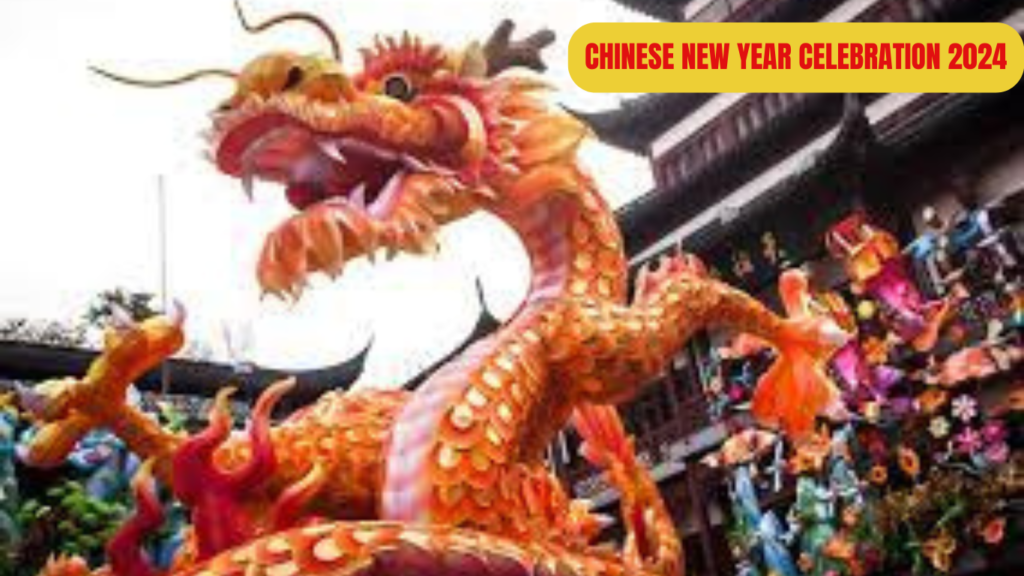
Lunar New Year, also known as Chinese New Year, marks the beginning of Spring and end of winter season according to ancient Chinese customs. It begins with the first new moon of the lunar calendar and ends 15 days later, on the first full moon. Because the lunar calendar is based on the cycles of the moon, the dates of the holiday vary slightly each year, falling between late January and mid-February.
If we flip through the History books, we will find that the origin of Chinese New Year was over 4000 years back. It’s one of the oldest traditions ever and has been passed down through generations. This celebration is connected to stories, farming, and how cultures change over time. This special day brings families together to honor their ancestors and welcome the arrival of spring. Before the establishment of Lunar Year Celebration, ancient Chinese communities used to come together to rejoice towards the end of the harvest season during Autumn. Some people believe that the origins of this tradition is deeply associated with early harvest festivities held around the 10th month of the lunar calendar, referring to the culmination of the agricultural cycle.
This festival is known as the Spring Festival in China, Tet in Vietnam and Seollal in Korea. It is a major festival celebrated in several Asian countries. It is also widely celebrated by diaspora communities around the world. It is a 15-day-long celebration that begins with the new moon between January 21 to February 20 in Western calendars.
In the Chinese zodiac, 2024 is the Year of the Dragon. It promises a year filled with hope, prosperity and unity. On February 10, Asian American communities around the United States will observe the Year of the Dragon with community carnivals, family gatherings, parades, traditional food, fireworks and other festivities. As Chinese communities continue to grow and thrive across the country, so too does the fervor and excitement surrounding this auspicious occasion.
In cities like San Francisco, New York, and Los Angeles, Chinese New Year celebrations have become iconic events, drawing locals and tourists alike into the colorful tapestry of Chinese culture. From lively parades to elaborate fireworks displays, the festivities capture the imagination and ignite the senses, offering a glimpse into the rich heritage of the Chinese people.
According to ancient Chinese mythology, a horrible monster that feasted on human flesh used to appear on New Year’s Day. As the monster was afraid of the color red, loud noise and fire, people put up dragons made of red paper on their front doors, burned red lanterns all night and ignited firecrackers to frighten and chase away the monster.
These days, Lunar New Year is celebrated to remove bad luck and to welcome all that are good and prosperous. Red being an auspicious color to the Chinese people is ushered in the new year celebration. In many Asian cultures, red symbolizes good fortune and joy. People dress up in red attire, decorate their houses with red paper-lanterns and use red envelopes to gift their loved ones and friends for the new year. In addition to cleaning their houses, many people buy new things like furniture to decorate their home. They also decorate homes using orchids and many other brightly colored flowers. Gambling and playing traditional games is common during this time across cultures.
Another common feature of this festival is Ancestor worship. Many Korean families observe a ritual during this time called ‘Charye’ where the female members of the family cook food and the male members serve it to their ancestors. The final step is called ‘Eumbok’ and it involves the entire family partaking the food and seeking blessings from their ancestors for the coming year. On the other hand, Vietnamese people cook traditional food before placing them on a home altar as a token of respect to their ancestors.
Food, as always, takes center stage during Chinese New Year celebrations. In cities across America, restaurants prepare special menus featuring traditional delicacies such as dumplings, noodles, and whole fish, symbolizing prosperity and abundance. Families gather for lavish reunion dinners, sharing laughter, stories, and, of course, mouth-watering dishes that pay homage to centuries-old culinary traditions.
For Chinese Americans, the Lunar New Year is not only a time to honor their heritage but also an opportunity to reflect on their identity and place in American society. It serves as a reminder of the resilience and contributions of Chinese immigrants and their descendants, whose stories are woven into the fabric of the nation’s history.
